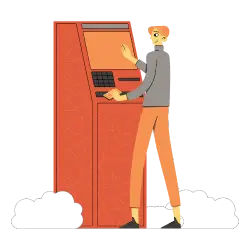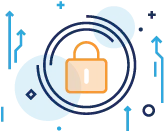Credit card fraud is a $10 billion industry, and credit card skimming forms a considerable part of this booming business. [1] Business.com. “Credit Card Fraud Is Now a $10B Business ― Are You at Risk?” Accessed May 16th, 2025. If you own a point-of-sale terminal, chances are good that your customers may have been a target of this form of fraud at some point. In 2023 alone, a whopping 315,000 people were victims of skimming. [2] LifeLock. “What is credit card skimming and how can you avoid it?” Accessed May 16th, 2025. Credit card skimmers are compact devices that can do much damage despite their minuscule physical dimensions. Fraudsters often use them to steal customers’ private information via a credit card’s magstripe.
In this article, we’ll dive into the intricacies of credit card skimming, including how it works and how you can effectively shield yourself and your customers from the cunning of skimming fraudsters.
Key Takeaways
- Credit card skimming involves using illegal devices to steal credit card information.
- Retail, eCommerce, and hospitality businesses in high-risk verticals remain particularly vulnerable.
- Businesses face financial, legal, and reputational damages when credit card skimming occurs.
- Staying proactive about credit card fraud can protect your business and customers.
What Is Credit Card Skimming?

Credit card skimming is a form of fraud in which a thief uses an illegal device or technique to steal credit card information from unsuspecting customers during a transaction. These criminals install a small, sophisticated gadget (the credit card skimmer) in areas outfitted with card readers. Examples include POS terminals, ticket kiosks, gas pumps, and ATMs. Often, these devices are designed to resemble the quote-unquote real thing, making it all the more difficult for you to know when you’re being taken advantage of.
When a customer inserts their credit card, the device effectively seizes and captures its magnetic stripe data (it is worth noting that magstripe transactions are particularly vulnerable in this regard). Advanced versions of skimmers can even transmit that data in real-time. In other cases, the criminal may install a hidden pinhole camera to capture a customer’s PIN. Another method of skimming involves placing an illegitimate but convincing-looking keypad over the real keypad to record PIN entries for later use. The bad actor then collects this information and proceeds to sell it to the dark web or use it themselves.
While any business can fall victim to credit card skimming, those in retail, eCommerce, and hospitality face the highest risk. These businesses usually handle high transaction volumes or have unsupervised payment terminals, creating the perfect opportunity for crooks to strike. Another example would be a gas station: it is stationary, unattended, and therefore, the ideal target for fraudsters.
How Does Credit Card Skimming Work?
Credit card skimming techniques have evolved and have become almost frighteningly effective in the past few years. The first step in preventing skimming begins with understanding how the process works.

Physical overlays and devices
This one is time-tested. It features a fake card reader that fits snugly over the real one. When an unsuspecting customer inserts or swipes their card, the skimmer copies the card’s data off its magnetic stripe. This fake card reader usually looks almost identical to the real one, making it trickier to notice.

Wireless skimming techniques
This method involves using tech like Bluetooth or WiFi to steal credit card data and transfer it to a criminal’s phone or computer. As technology gets smarter, these wireless setups are becoming more common.

Internal mechanisms and cameras
This scenario involves the criminal inserting the skimmer inside the payment terminal’s internal systems. They can also rig it with a tiny camera that captures PIN information. This is an all-too-common form of skimming that merchants should be mindful of.
Signs of Skimming
No one is ever truly immune to the ever-evolving risks of skimming. Fortunately, knowing the following red flags can save your business and customers a ton of trouble.
- Loose or misaligned card readers: A wiggling or crooked card reader should set off alarm bells. It might alert you that someone tampered with the terminal or device and didn’t have the opportunity to fit the skimmer perfectly.
- Unusual resistance when inserting cards: There should be zero friction when inserting a credit card into a reader. If you encounter some resistance, that could be the skimmer jamming things up.
- Keypads that feel thicker than usual: Different card readers have unique keypad designs. However, if you notice that a keypad feels or looks bulkier than it should, that could be a physical overlay to snag PINs.
- Broken security seals on payment terminals: Credit card readers usually use security seals to keep everything under lock and key. A damaged or missing seal could indicate tampering.
- Unusual blinking lights: If the lights on your terminal or device are flashing randomly, even when the device is not in use, a fraudster might be using wireless tech to steal sensitive data.
- Unusual POS machines: Attachments and cables are what you’ll find in a typical POS. If you notice that it looks bulkier or has odd attachments, it’s worth double-checking. Thieves might have rigged it with a skimmer.
- Unattended kiosks: Self-service payment stations like ticketing machines and gas pumps are especially vulnerable to fraudsters’ advances because they are largely unattended.
The Impact of Skimming on Consumers (And Businesses)
Like any form of crime, credit card skimming is far from victimless. Below, we’ll explore how it affects both businesses and customers.

For customers
Missing Funds
Recent numbers show that, on average, credit card skimming costs financial entities and customers approximately $1 billion yearly.
The victim might not immediately notice their funds are missing, only to be shocked when they check their accounts or receive transaction notifications. That’s why it’s important to remind customers to regularly check their accounts so they can identify and report instances of skimming early.
Mental Health Side Effects
Victims of credit card skimming sometimes suffer from the mental anguish that comes with being robbed. Maybe the victim had saved those funds for their children’s school fees or emergencies. The act of theft can induce feelings of anxiety, anger, and frustration.
Skimming can also facilitate identity theft if the fraudsters sell the victims’ information online. Sorting out these issues is a physically and emotionally draining process.

For businesses
Reputational Damage
If a customer gets skimmed at your place of business, chances are they won’t return. In the social media era, negative word-of-mouth travels fast.
Legal and Financial Woes
Usually, banks grant customers 30 days to report this form of fraud. While your bank might cover the losses, industry regulators and angry customers might still choose to pursue legal action. Lawsuits are expensive, and that’s not even considering all the revenue lost from the initial skim.
You’ll likely have to enhance security measures, including investing in cutting-edge credit card authentication protocols. These financial woes can create significant obstacles for your business in the future.
How to Prevent Credit Card Skimming
Merchants can protect their customers and businesses by taking proactive measures against credit card skimming. This starts with mastering fraud prevention in its entirety. Here are a few of our favorite strategies for preventing credit card skimming.

Inspect card readers and keypads daily
This is one of the most straightforward yet effective strategies against skimming. Make a habit of inspecting all readers daily to help you spot tampering and correct it accordingly.

Favor tap-to-pay and contactless methods
These methods leverage advanced encryption and tokenization to render credit card information as a one-time code, making it harder for fraudsters to intercept transaction data.

Upgrade to EMV chip readers
Your credit card processing system could be due for a much-delayed upgrade! Ditch the traditional payment systems for an EMV chip reader. These are much safer since they generate a unique single-use code for every transaction. Chip cards are an alternative to magstripes, which are super vulnerable to skimming.
While they’re not entirely immune to skimming, EMV chip cards use advanced security, such as dynamic authentication and tokenization.

Use tamper-evident seals
Installing several of these seals on your terminals will show when someone breaks, steals, or tampers with them.

Train employees to spot skimmers
Your team is your first line of defense. Organize professional training to learn everything about credit card skimming. Teach them to use modern AI-powered platforms to detect unusual patterns, like BIN attacks.

Beef up physical and cybersecurity
Secure all payment terminals with sturdy locks and install cameras. As fraud tools become more sophisticated, so should your fraud detection measures.
Avoid Credit Card Fraud With PaymentCloud

Credit card skimming is as much a customer’s problem as it is yours. Protect against it proactively, and you’ve set yourself up for long-standing client relationships defined by trust, repeat purchases, and positive referrals. At PaymentCloud, we’re all about kicking skimmers and other fraudsters to the curb. We create robust solutions that simplify financial transactions while existing at the highest levels of PCI-compliant security. We’ve done all the detection and prevention legwork, so you never have to.
Remember, any additional measure you take is a step closer to total peace of mind. Learn more about our fraud prevention solutions today.
FAQs about Credit Card Skimming
How common is credit card skimming?
Approximately three in ten Americans fear they’ve been a victim of card skimming at least once, and half think it happened within the past year. In 2023, FICO reported that instances of debit card fraud increased by an alarming 96% from the previous year, much of which is the direct result of card skimming[3]FICO. “Debit Card Compromises Nearly Doubled in 2023 – FICO Data“. Accessed on May 16th, 2025..
Does tap-to-pay avoid skimmers?
Tap-to-pay uses encrypted tokens to obscure card numbers from skimmers. While no card-based payment method is completely exempt from the threat of skimming, tap-to-pay options are generally considered safer than most in this regard.
Do credit card chips prevent skimming?
Chips encrypt transactions and financial data, making cloning a card a challenge. Chip card-based transactions also generate unique, singular tokens for each transaction, which is not a functionality offered by magstripe cards.







